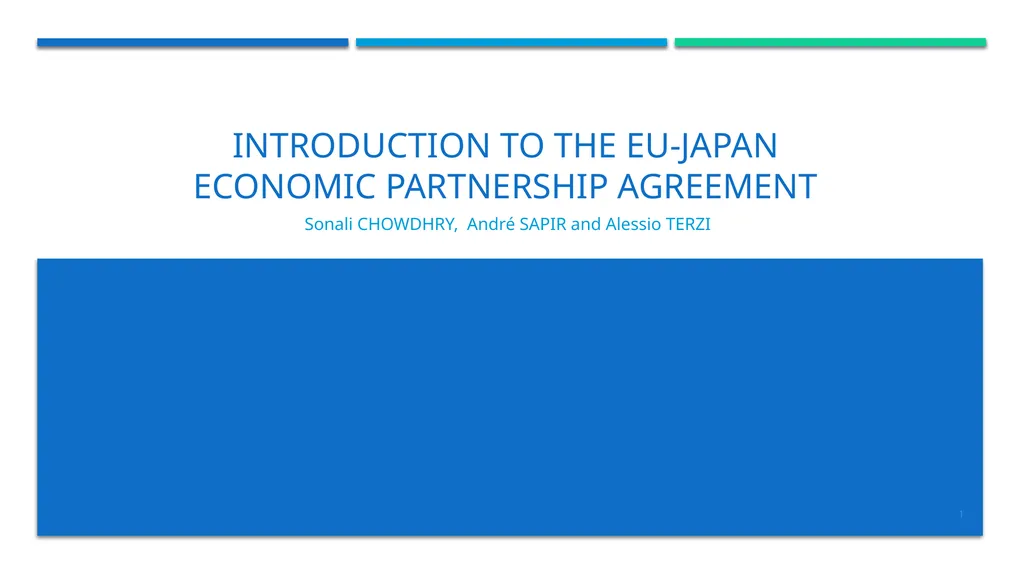
Author : pasty-toler | Published Date : 2025-05-24
Description: INTRODUCTION TO THE eu-japan economic partnership agreement Sonali CHOWDHRY, André SAPIR and Alessio TERZI 1 NEW EP Study 2 Read more here https:bit.ly2QoXnXe INTRODUCTION The EUJEPA is the largest bilateral deal for the EU An agreementDownload Presentation The PPT/PDF document "" is the property of its rightful owner. Permission is granted to download and print the materials on this website for personal, non-commercial use only, and to display it on your personal computer provided you do not modify the materials and that you retain all copyright notices contained in the materials. By downloading content from our website, you accept the terms of this agreement.
Here is the link to download the presentation.
"INTRODUCTION TO THE eu-japan economic partnership"The content belongs to its owner. You may download and print it for personal use, without modification, and keep all copyright notices. By downloading, you agree to these terms.













